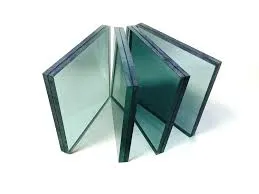The Evolution of Architectural Glass A Transparent Revolution
In the modern architectural landscape, glass has emerged as a defining element that blurs the boundaries between indoor and outdoor spaces. With its unique ability to reflect light, create visual depth, and enhance energy efficiency, architectural glass has transformed the way we design, build, and experience structures. From the humble panes of the past to the sophisticated glass façades of today, the evolution of architectural glass tells a compelling story of innovation and creativity.
Historically, glass was primarily used for windows and skylights, with limited applications in structural design. Early forms of glass were often small and rudimentary, primarily crafted for functional purposes to keep the elements out while allowing glimpses of the outside world. However, the Industrial Revolution marked a turning point in glass manufacturing. Advances in production techniques allowed for larger, clearer sheets of glass, paving the way for more ambitious architectural designs.
The 20th century witnessed an explosion of creativity, as architects began to experiment with glass as a primary material. Iconic structures like the Crystal Palace in London and the Seagram Building in New York utilized glass not just for its functional properties but as a means of artistic expression. The transparency of glass allowed for an interplay between interior and exterior spaces, creating environments that felt open and inviting. This trend toward transparency was further propelled by the principles of modernism, which emphasized the use of industrial materials to achieve new forms and structures.
Today, architectural glass has advanced far beyond its traditional applications. Innovative technologies have led to the development of energy-efficient glazing systems that enhance the performance of buildings. Double and triple-glazed units, for instance, provide superior insulation while allowing natural light to flood interior spaces. Additionally, advancements in low-emissivity (low-E) coatings have significantly reduced heat loss, making glass a viable option for energy-conscious designs. These technologies have led to the rise of “green buildings” that utilize glass not only for aesthetics but also for their sustainability.
architectural glass
Moreover, the aesthetic possibilities of architectural glass are vast and exciting
. Architects now have access to a variety of glass types, including tinted, frosted, and patterned glass, each contributing unique visual qualities to a building's design. Glass can also be combined with other materials, such as steel and concrete, to create striking contrasts in texture and appearance. The use of glass in structural applications—such as glass bridges, staircases, and walls—has opened new dimensions in architectural design, where the interplay of light and shadow plays a critical role in the overall experience of a space.
In addition to functional and aesthetic advancements, the safety and durability of architectural glass have significantly improved over the years. Laminated and tempered glass offer increased resistance to impact and breakage, making it suitable for high-rise buildings and other applications where safety is paramount. Innovations such as self-cleaning glass and smart glass—capable of changing opacity or reflecting heat—are further pushing the boundaries of what glass can achieve in architecture.
As we look to the future, the role of architectural glass will continue to evolve. With the ongoing focus on environmental sustainability, glass manufacturers and architects are exploring even more innovative solutions, such as photovoltaic glass that integrates solar energy technology into building facades. This fusion of technology and design aims to create buildings that are not only visually striking but also functionally efficient.
In conclusion, architectural glass stands as a testament to the evolution of design and technology in the built environment. Its journey from a humble building material to a central element in modern architecture reflects broader trends in society, emphasizing transparency, sustainability, and creativity. As architects and builders continue to push the boundaries of what is possible with glass, we can expect to see a future where buildings are not just structures, but dynamic spaces that foster connection with the world around us. The transparent revolution is far from over—indeed, it is just beginning.
 Afrikaans
Afrikaans  Albanian
Albanian  Amharic
Amharic  Arabic
Arabic  Armenian
Armenian  Azerbaijani
Azerbaijani  Basque
Basque  Belarusian
Belarusian  Bengali
Bengali  Bosnian
Bosnian  Bulgarian
Bulgarian  Catalan
Catalan  Cebuano
Cebuano  Corsican
Corsican  Croatian
Croatian  Czech
Czech  Danish
Danish  Dutch
Dutch  English
English  Esperanto
Esperanto  Estonian
Estonian  Finnish
Finnish  French
French  Frisian
Frisian  Galician
Galician  Georgian
Georgian  German
German  Greek
Greek  Gujarati
Gujarati  Haitian Creole
Haitian Creole  hausa
hausa  hawaiian
hawaiian  Hebrew
Hebrew  Hindi
Hindi  Miao
Miao  Hungarian
Hungarian  Icelandic
Icelandic  igbo
igbo  Indonesian
Indonesian  irish
irish  Italian
Italian  Japanese
Japanese  Javanese
Javanese  Kannada
Kannada  kazakh
kazakh  Khmer
Khmer  Rwandese
Rwandese  Korean
Korean  Kurdish
Kurdish  Kyrgyz
Kyrgyz  Lao
Lao  Latin
Latin  Latvian
Latvian  Lithuanian
Lithuanian  Luxembourgish
Luxembourgish  Macedonian
Macedonian  Malgashi
Malgashi  Malay
Malay  Malayalam
Malayalam  Maltese
Maltese  Maori
Maori  Marathi
Marathi  Mongolian
Mongolian  Myanmar
Myanmar  Nepali
Nepali  Norwegian
Norwegian  Norwegian
Norwegian  Occitan
Occitan  Pashto
Pashto  Persian
Persian  Polish
Polish  Portuguese
Portuguese  Punjabi
Punjabi  Romanian
Romanian  Russian
Russian  Samoan
Samoan  Scottish Gaelic
Scottish Gaelic  Serbian
Serbian  Sesotho
Sesotho  Shona
Shona  Sindhi
Sindhi  Sinhala
Sinhala  Slovak
Slovak  Slovenian
Slovenian  Somali
Somali  Spanish
Spanish  Sundanese
Sundanese  Swahili
Swahili  Swedish
Swedish  Tagalog
Tagalog  Tajik
Tajik  Tamil
Tamil  Tatar
Tatar  Telugu
Telugu  Thai
Thai  Turkish
Turkish  Turkmen
Turkmen  Ukrainian
Ukrainian  Urdu
Urdu  Uighur
Uighur  Uzbek
Uzbek  Vietnamese
Vietnamese  Welsh
Welsh  Bantu
Bantu  Yiddish
Yiddish  Yoruba
Yoruba  Zulu
Zulu 

